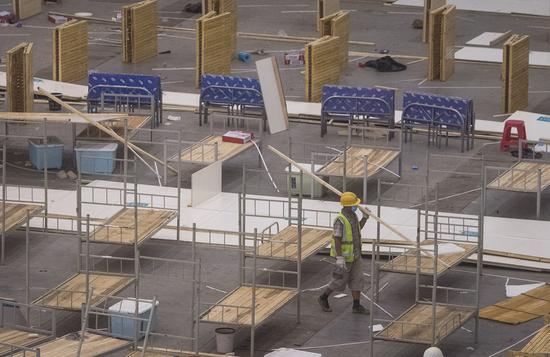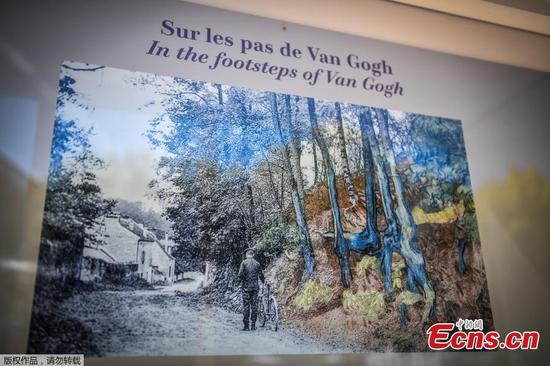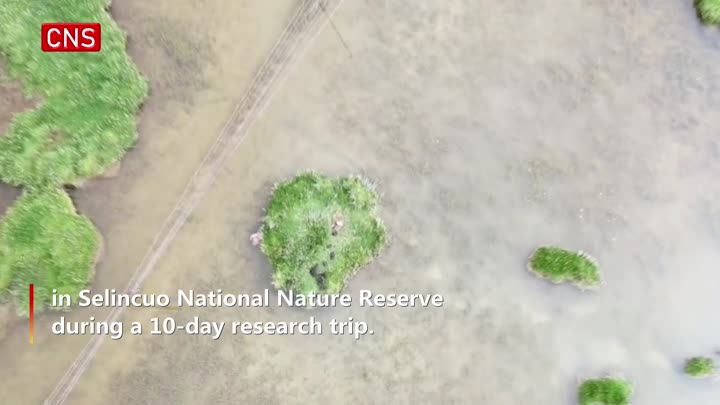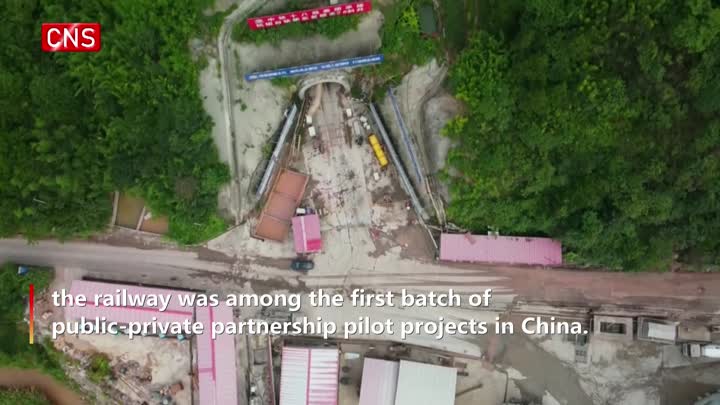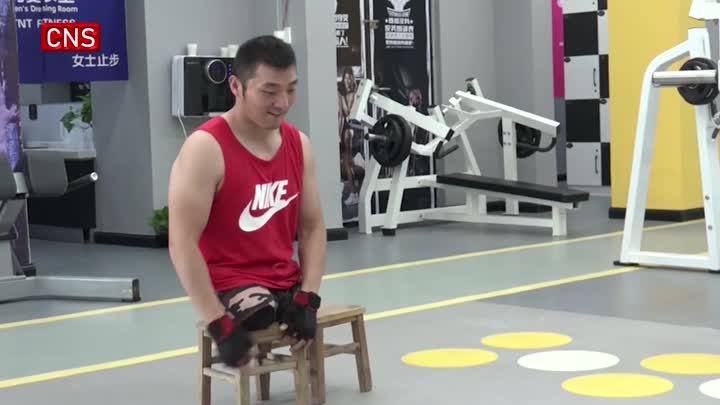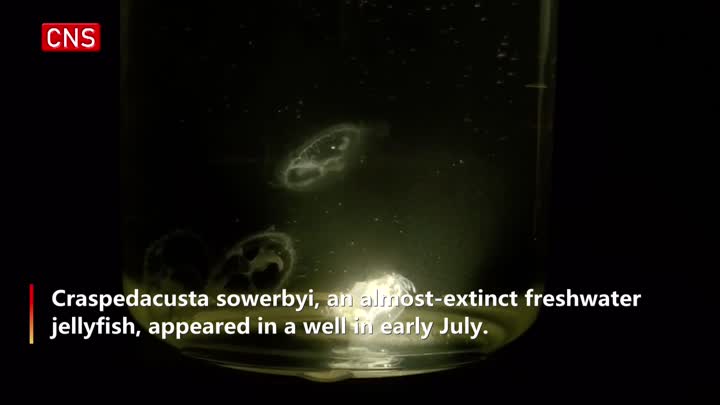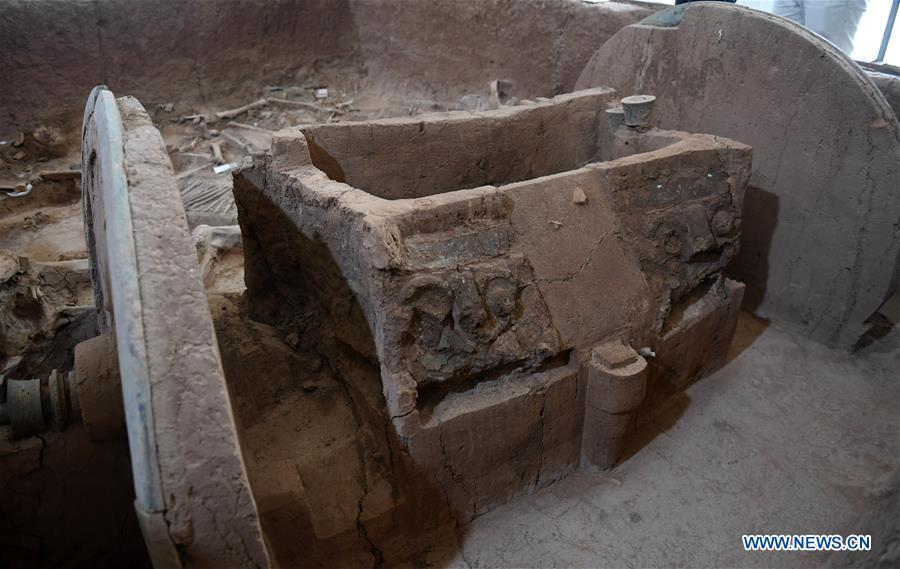
A part of a restored bronze chariot is seen at a base of Shaanxi Provincial Institute of Archaeology in Xi'an City, northwest China's Shaanxi Province, July 30, 2020. A bronze chariot, dating from the Western Zhou Dynasty (1046-771 BC), has been restored by cultural-relics protection workers in a project lasting three years, according to the Shaanxi Provincial Institute of Archaeology. The chariot, unearthed in 2014 at the Zhouyuan site in northwestern Shaanxi, is 3.13 meters long, 2.7 meters wide, and 1.5 meters high. When it was discovered, it had been crushed into thousands of fragments. The skeletal remains of four horses were also unearthed with it. (Xinhua/Li Yibo)
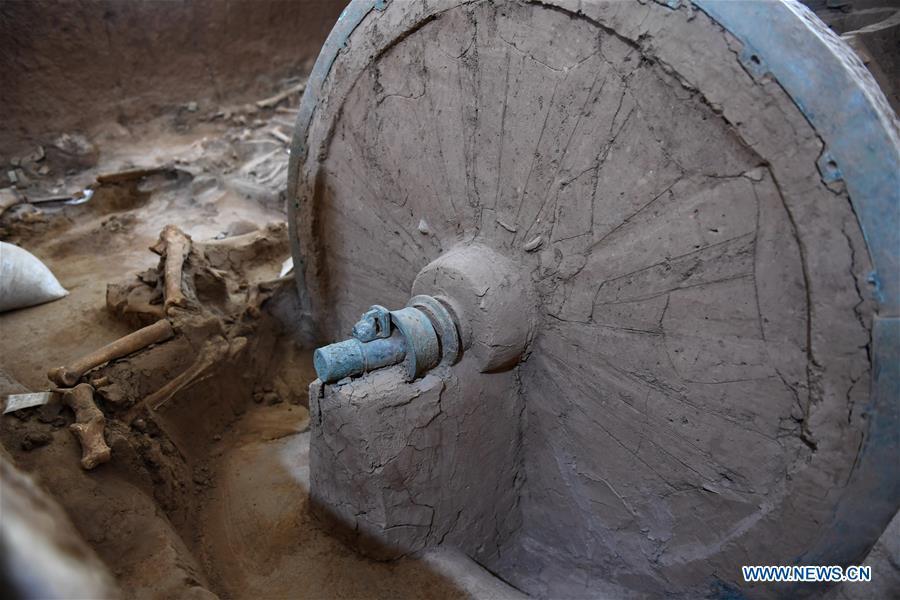
The wheel of a restored bronze chariot is seen at a base of Shaanxi Provincial Institute of Archaeology in Xi'an City, northwest China's Shaanxi Province, July 30, 2020. A bronze chariot, dating from the Western Zhou Dynasty (1046-771 BC), has been restored by cultural-relics protection workers in a project lasting three years, according to the Shaanxi Provincial Institute of Archaeology. The chariot, unearthed in 2014 at the Zhouyuan site in northwestern Shaanxi, is 3.13 meters long, 2.7 meters wide, and 1.5 meters high. When it was discovered, it had been crushed into thousands of fragments. The skeletal remains of four horses were also unearthed with it. (Xinhua/Li Yibo)
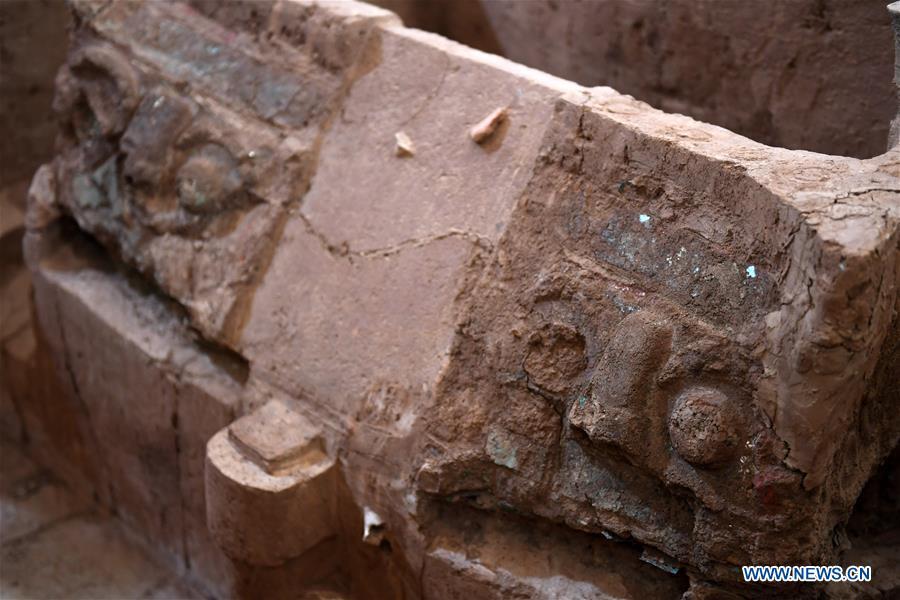
A part of a restored bronze chariot is seen at a base of Shaanxi Provincial Institute of Archaeology in Xi'an City, northwest China's Shaanxi Province, July 30, 2020. A bronze chariot, dating from the Western Zhou Dynasty (1046-771 BC), has been restored by cultural-relics protection workers in a project lasting three years, according to the Shaanxi Provincial Institute of Archaeology. The chariot, unearthed in 2014 at the Zhouyuan site in northwestern Shaanxi, is 3.13 meters long, 2.7 meters wide, and 1.5 meters high. When it was discovered, it had been crushed into thousands of fragments. The skeletal remains of four horses were also unearthed with it. (Xinhua/Li Yibo)
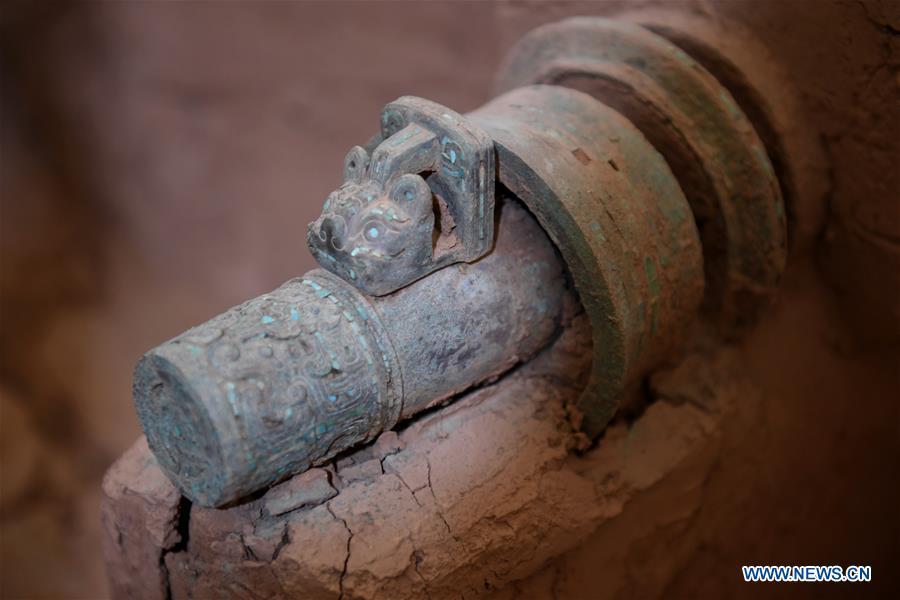
A part of a restored bronze chariot is seen at a base of Shaanxi Provincial Institute of Archaeology in Xi'an City, northwest China's Shaanxi Province, July 30, 2020. A bronze chariot, dating from the Western Zhou Dynasty (1046-771 BC), has been restored by cultural-relics protection workers in a project lasting three years, according to the Shaanxi Provincial Institute of Archaeology. The chariot, unearthed in 2014 at the Zhouyuan site in northwestern Shaanxi, is 3.13 meters long, 2.7 meters wide, and 1.5 meters high. When it was discovered, it had been crushed into thousands of fragments. The skeletal remains of four horses were also unearthed with it. (Xinhua/Li Yibo)
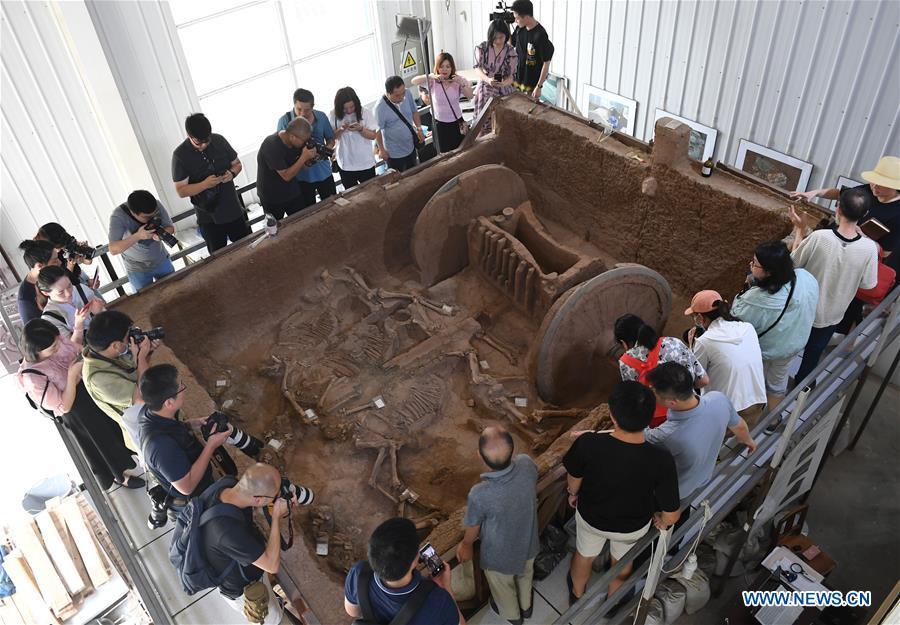
A restored bronze chariot is on display at a base of Shaanxi Provincial Institute of Archaeology in Xi'an City, northwest China's Shaanxi Province, July 30, 2020. A bronze chariot, dating from the Western Zhou Dynasty (1046-771 BC), has been restored by cultural-relics protection workers in a project lasting three years, according to the Shaanxi Provincial Institute of Archaeology. The chariot, unearthed in 2014 at the Zhouyuan site in northwestern Shaanxi, is 3.13 meters long, 2.7 meters wide, and 1.5 meters high. When it was discovered, it had been crushed into thousands of fragments. The skeletal remains of four horses were also unearthed with it. (Xinhua/Li Yibo)
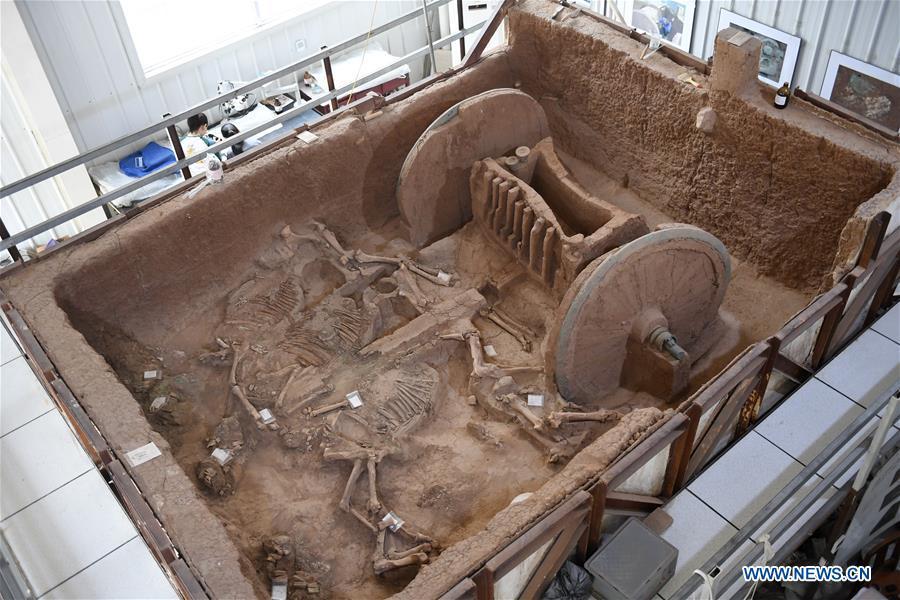
A restored bronze chariot is on display at a base of Shaanxi Provincial Institute of Archaeology in Xi'an City, northwest China's Shaanxi Province, July 30, 2020. A bronze chariot, dating from the Western Zhou Dynasty (1046-771 BC), has been restored by cultural-relics protection workers in a project lasting three years, according to the Shaanxi Provincial Institute of Archaeology. The chariot, unearthed in 2014 at the Zhouyuan site in northwestern Shaanxi, is 3.13 meters long, 2.7 meters wide, and 1.5 meters high. When it was discovered, it had been crushed into thousands of fragments. The skeletal remains of four horses were also unearthed with it. (Xinhua/Li Yibo)
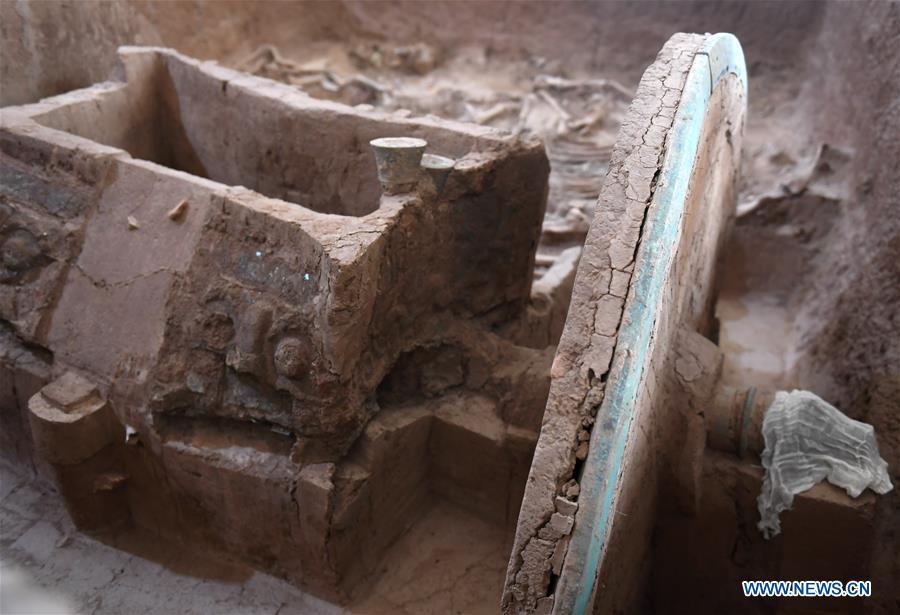
The wheel of a restored bronze chariot is seen at a base of Shaanxi Provincial Institute of Archaeology in Xi'an City, northwest China's Shaanxi Province, July 30, 2020. A bronze chariot, dating from the Western Zhou Dynasty (1046-771 BC), has been restored by cultural-relics protection workers in a project lasting three years, according to the Shaanxi Provincial Institute of Archaeology. The chariot, unearthed in 2014 at the Zhouyuan site in northwestern Shaanxi, is 3.13 meters long, 2.7 meters wide, and 1.5 meters high. When it was discovered, it had been crushed into thousands of fragments. The skeletal remains of four horses were also unearthed with it. (Xinhua/Li Yibo)
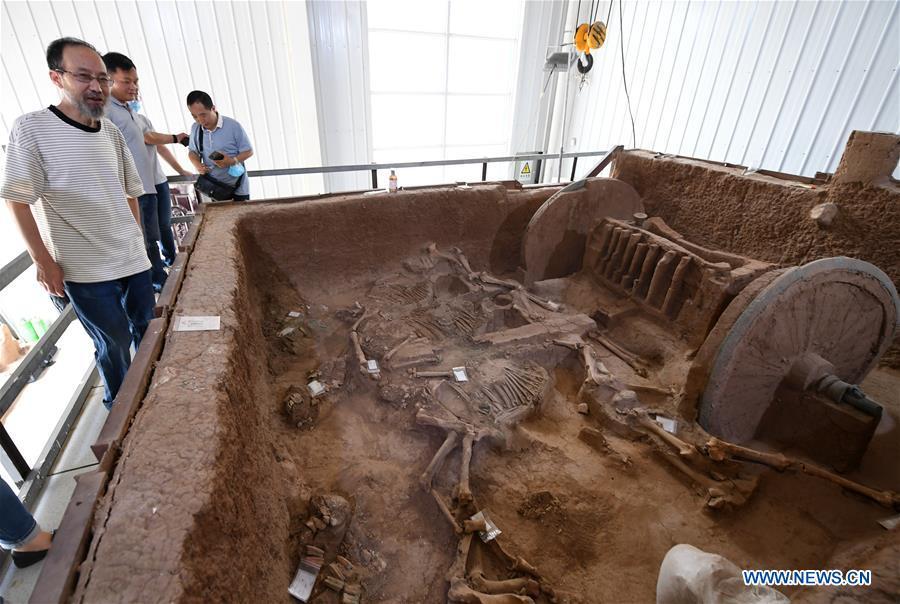
A restored bronze chariot is on display at a base of Shaanxi Provincial Institute of Archaeology in Xi'an City, northwest China's Shaanxi Province, July 30, 2020. A bronze chariot, dating from the Western Zhou Dynasty (1046-771 BC), has been restored by cultural-relics protection workers in a project lasting three years, according to the Shaanxi Provincial Institute of Archaeology. The chariot, unearthed in 2014 at the Zhouyuan site in northwestern Shaanxi, is 3.13 meters long, 2.7 meters wide, and 1.5 meters high. When it was discovered, it had been crushed into thousands of fragments. The skeletal remains of four horses were also unearthed with it. (Xinhua/Li Yibo)
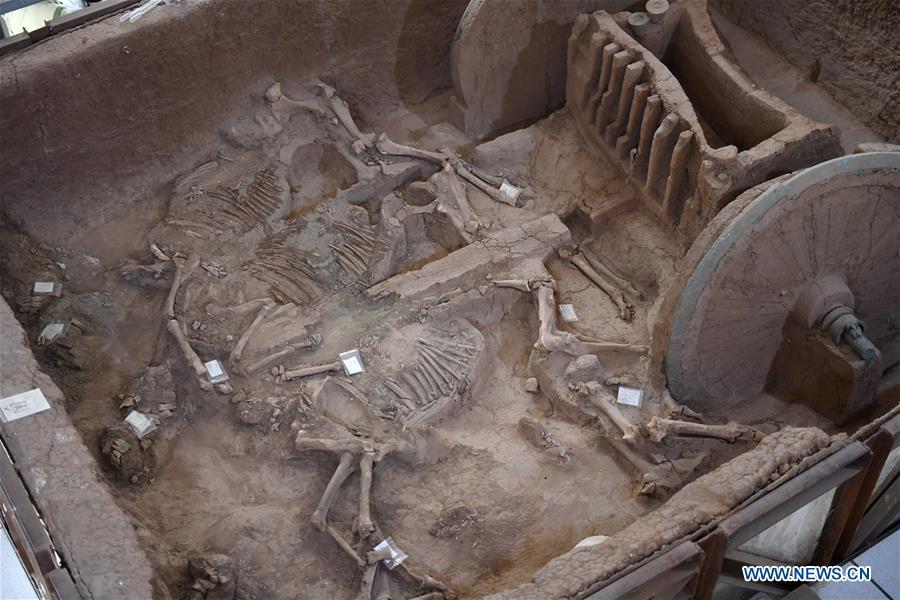
A restored bronze chariot is on display at a base of Shaanxi Provincial Institute of Archaeology in Xi'an City, northwest China's Shaanxi Province, July 30, 2020. A bronze chariot, dating from the Western Zhou Dynasty (1046-771 BC), has been restored by cultural-relics protection workers in a project lasting three years, according to the Shaanxi Provincial Institute of Archaeology. The chariot, unearthed in 2014 at the Zhouyuan site in northwestern Shaanxi, is 3.13 meters long, 2.7 meters wide, and 1.5 meters high. When it was discovered, it had been crushed into thousands of fragments. The skeletal remains of four horses were also unearthed with it. (Xinhua/Li Yibo)













